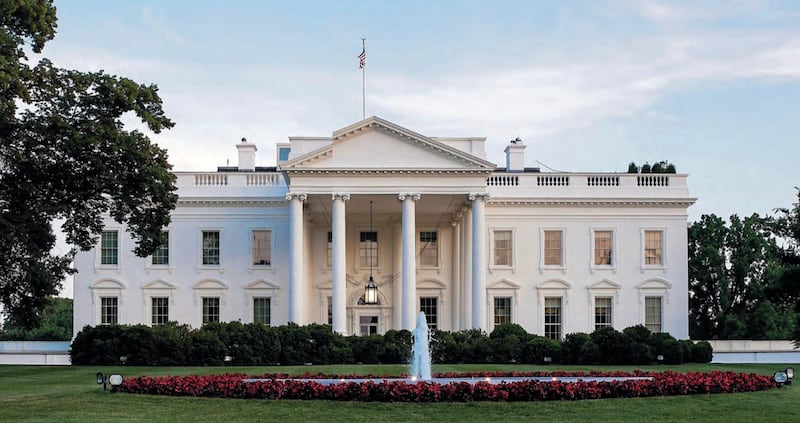The designer of the White House was heavily influenced by a stately home in Co Kilkenny that was burned down during the Irish Civil War, a new book suggests.
James Hoban: Designer and Builder of the White House is the first book about the Irish-born architect who was commissioned by the first president of the United States, George Washington, to build the iconic residence.
Desart Court in Cuffesgrange, Co Kilkenny, stood for nearly 200 years before it was burned to the ground in February 1923 by anti-Treaty republicans.
At the time, the house was owned by Hamilton Cuffe, the fifth earl of Desart. His sister-in-law Ellen Cuffe was set to become one of the senators in the Free State Senate.
How one couple turned their passion for chocolate into a thriving business
The Stolen Girl: Bingeable, fun and instantly forgettable child kidnap potboiler with Denise Gough
How Irish booksellers feel about the arrival of Amazon.ie: ‘It’s a very real danger to the industry’
Have your say: Who is the greatest Irish sports star of them all?
The anti-Treaty IRA had said that anybody who agreed to become a member of the Senate would be executed. Instead, many of their homes were burned.
Desart Court was rebuilt after the arson attack but eventually was demolished in 1957.
Hoban was born in 1755 and his childhood years were spent in Desart. His father was a tenant farmer. Unusually for somebody involved in architecture and home-building at the time in Ireland, he was a Catholic.
In 1785, at the age of 30, he emigrated to the US, where he took up residence in Charleston, South Carolina.
He met Washington in Charleston in 1791. Hoban won the competition to design the White House in 1792 and it was completed by 1800.

He was also involved in rebuilding the White House after it was burned to the ground by the British in 1812.
The book, which is edited by the president of the White House Historical Association, Stewart D McLaurin, states that many of the design features of the White House are based on Irish buildings.
These include not only Desart Court, but also Leinster House, which was then the home of the Duke of Leinster and is now where the Oireachtas is located. Another building that influenced Hoban was the Custom House, a masterpiece of 1780s Irish neoclassicism by James Gandon.
The book states that the inspiration for the White House came from Desart Court.
Mr McLaurin and his team have visited Ireland to look at the buildings which influenced the design.
Among the places they visited was the 18th-century Newcomen bank, opposite City Hall in Dublin, where there are three oval rooms which are “perfectly spatially reminiscent of the Oval Office in the White House”.
Mr McLaurin said it was “remarkable that so little is known about [Hoban] here or in America” and that it has taken more than 200 years for the first book to be written about him and his work.
All of Hoban’s papers were burned in a fire after he died and so little is known about his life other than the buildings he left behind.
“He knew he could not get any further in Ireland because of the penal laws. Though he would not call it the American dream, he went to America to pursue his craft,” Mr McLaurin said. “He was one of the founders of the first Catholic Church in virtually the entire southeast of America.”









